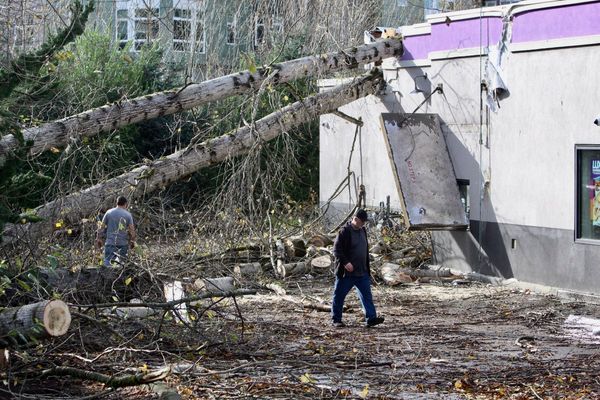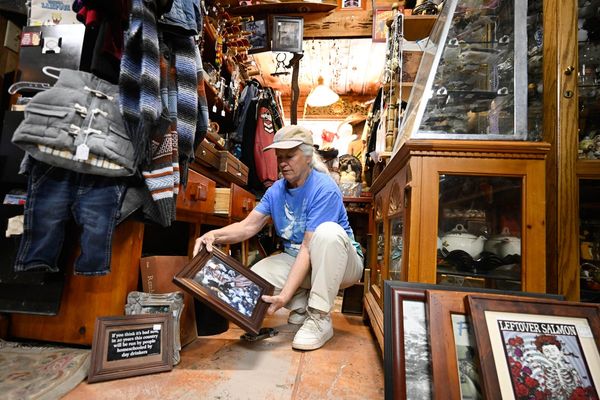
The Tate galleries have lost 2.2 million visitors in the past five years. That’s a drop of more than a fifth since pre-pandemic times. Tate has been in discussions with the Department for Culture, Media and Sport about its financial position, with trustees acknowledging “uncertainty” over its ability to remain a going concern.
You’d hope this would spark some reflection about whether the Tate, and museums more broadly, are truly engaging audiences in the way they once did. But instead, the discussion seems to have turned inward, focused more on curatorial ideology than the people walking through the doors.
The Tate isn’t alone in this shift. Labels throughout UK museums, such as the Kelvingrove Art Gallery and Museum in Glasgow, or the Fitzwilliam in Cambridge, increasingly highlight issues of social injustice; racism, sexism, class disparity, often at the expense of nuance or historical accuracy.
Also read: How the capital's art world went broke on woke
The infamous racist chair label in the Tate’s 2021 Hogarth and Europe exhibition — in which the commentary alongside a self-portrait suggested the chair Hogarth was sitting in, possibly made from colonial timbers, could “stand in for all those unnamed black and brown people enabling the society that supports his vigorous creativity” — was just the tip of the iceberg.
Such a heavy-handed approach can feel patronising, art critics have noticed. The Financial Times’s Jackie Wullschlager despaired at the Tate’s failure to put a picture on the front of their catalogue for the exhibition: “Hogarth cancelled,” she wrote. And this paper’s Melanie McDonagh decried the “asinine wokery” on display. On social media, reactions ranged from “art as a guilt trip” to “preachy and insufferable”.
While these interventions often aim to broaden historical understanding and represent previously marginalised voices, their execution can feel alienating, turning complex legacies into moral lectures.
The Tate is not the only arts institution with financial difficulties. The Royal Academy of Arts is facing a struggle, caught in a perfect storm of financial woes as visitor numbers linger far below pre-pandemic levels, dropping to 622,000 in 2024 from 1.25 million, while costs soar and income dwindles, leaving it facing a £7 million deficit. With no government lifeline, in contrast to the Tate, the RA’s reliance on ticket sales and memberships has left it vulnerable, forcing painful proposals like the prospect of cutting up to 60 jobs.
In contrast, the British Museum has seen a welcome rise in visitor numbers, reaching 6.48 million in 2024, an 11 per cent increase from 5.8 million in 2023, reclaiming its spot as the UK’s top attraction despite not yet hitting the pre-pandemic high of 6.7 million.
Everything is now seen through a political lens
This isn’t just about the Tate. A wider ideological shift has taken place in the arts, where museums are increasingly being used as platforms for activism rather than places of artistic and historical exploration. Everything is now seen through a political lens; climate change, decolonisation, trans issues, diversity, equity and Inclusion (as long as it’s the right kind of DEI). Museums are doing this now explicitly — see the Museums Association’s recent campaign to decolonise the museum.
Or take the University of Leicester’s recent trans-inclusive guidance which heavily influences the sector. Currently, Arts Council England is under review, led by Baroness Margaret Hodge of Barking. At Freedom in the Arts, we are engaging with the review and will be asking if it will consider the over-politicisation of the sector.
The real danger here isn’t just declining footfall; it’s what happens when audiences, donors and policymakers start seeing museums as out of touch
The real danger here isn’t just declining footfall; it’s what happens when audiences, donors and policymakers start seeing museums as out of touch. The arts rely on public goodwill and funding. If institutions push too far into activism at the expense of engaging exhibitions, they hand an easy victory to those who want to cut arts budgets entirely.
Here’s the irony: Brexit was the first warning shot. In the arts world, there was sympathy for the impact Brexit had on touring artists, making foreign tours much more difficult and bringing international artists to the UK fraught with risk; in effect, Brexit narrowed our worldview by making the flow of artists and ideas much more difficult, the UK looking isolated in Europe and the world.
Most people who worked in the arts were staunchly Remain and have remained so, but even at the time seemed deeply uncurious as to why a majority of the UK population may have voted Leave. Instead of asking why people voted for Brexit, many in the arts industry simply vilified them. This stance of moral superiority has become entrenched.
The Covid-19 pandemic hit UK museums and galleries hard, forcing closures that decimated visitor numbers and revenue while pushing the museums toward digital survival. The Museums Association reported over 4,000 museum jobs lost by 2021, with 63 per cent of UK museums cutting staff or hours. Closures, some lasting over a year, especially among London’s smaller venues, slashed income from tickets and shops. The sector lost an estimated £1 billion in 2020 alone.
But with Covid something else shifted. Arts organisations, with staff supported through furlough schemes, suddenly found themselves free from audiences. No one to mess up the place. No public to worry about. And for some, this detachment turned into quiet disdain.
Now, audiences are treated as a problem to be educated rather than a public to be entertained. They must be shown how progressive and enlightened these institutions are. But here’s the thing: people are voting with their feet. The majority may not write angry letters or tweet their discontent, but they simply stop coming.
The arts should be a space for freedom, not dogma. Ignore the public and your artists — and politicians will step in. That’s the real threat to the arts.
Rosie Kay is co-founder of Freedom in the Arts and artistic director of K2CO
Freedom in the Arts launch their freedom of expression survey results on May 6 https://www.freedominthearts.com/







